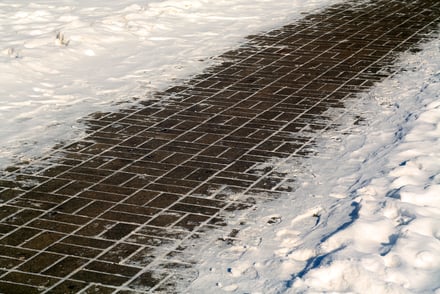Owners of a historic DC brick home know that they need to maintain the mortar joints of the old brick facades of their home. Tuckpointing, or repointing, is the process by which the joints are restored. It's not always easy to know when to contact a professional. Here are some tips for how you and tell if your brick walls need repair and what is involved.
What Signs of Brick Deterioration Should I Look For?
Spring is the best time for a visual inspection of the brick joints. These joints, which appear dark or shadowed, are recessed inward from the brick faces, allowing moisture to linger on brick edges and penetrate the load bearing walls behind them. Look for a powdery lime mortar that crumbles to the touch or is easily extracted with a key or a pencil. You many need to use a pocket knife to perform a probing test.
If you find these obvious signs of mortar deterioration— particularly at eye level on ground floors—you should get a professional assessment by an expert in historic brick buildings. Even a few areas of deterioration can be indicative of the building's overall condition.
Can I Just Have the Problem Areas Repaired?
This is a common question from homeowners. Does the entire wall have to be repaired if the deterioration is limited to a specific area. Many homeowners and some building professionals consider “spot tuckpointing”—filling holes with cement only where damage is most apparent—a reasonable repair, especially because it is quick and inexpensive.Although this practice is common and visible all over Washington, spot tuckpointing is merely a band-aid approach that can neither stabilize a building nor halt its continued deterioration.
What if I Find a White Powdery Substance on the Brick?
The white powdery substance is efflorescence. Although it is unattractive, it’s usually not harmful to brick masonry. It is, however, an indication of the presence of excess water in the masonry, which can lead to more serious issues.
If you find signs of weather wear or other types of brick deterioration on your historic DC brick home, you should contact a masonry contractor. An accurate diagnosis of the problem is needed to determine the extent of the repair. To protect the historical authenticity and structural integrity of your home, select a contractor who has the particular expertise for traditional tuckpointing methods and materials.
Renaissance Development, a leader in historic home renovation and preservation, specializes in the restoration of a historic brick building's mortar joints using traditional methods(tuckpointing) and materials. Contact us for a free site visit and project quote.
Tags:
RepairFeb 1, 2018 5:43:40 PM



